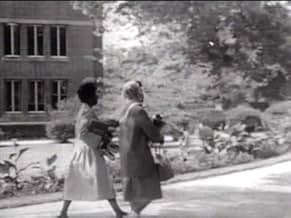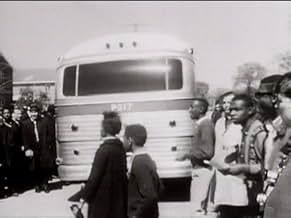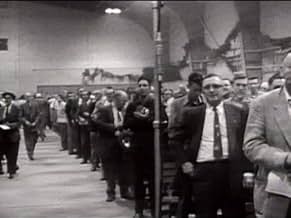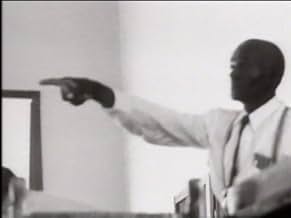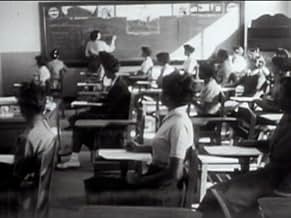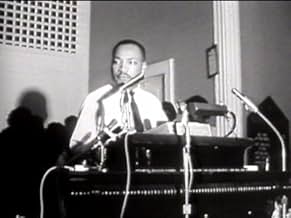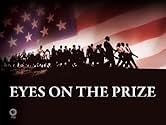Füge eine Handlung in deiner Sprache hinzuA documentary about the American Civil Rights Movement from 1952 to 1965.A documentary about the American Civil Rights Movement from 1952 to 1965.A documentary about the American Civil Rights Movement from 1952 to 1965.
- Für 1 Oscar nominiert
- 11 Gewinne & 5 Nominierungen insgesamt
Folgen durchsuchen
Empfohlene Bewertungen
In a world where black children search for pride on street corners, and find their idols in drugged out athletes, absent fathers, idiots and zombies, in these television hours lie little glimpses of hope, shining examples of the people who fought and died for love of the future. I make it a point to watch this program at least once a year and show it to anyone who seems to have even a passing interest in tomorrow. Malcolm X, Martin Luther King, Fannie Lou Hamer, The black Panther Party, busing in Boston, political mobilization in Chicago, the fight for freedom has never been given such a detailed depiction. This film is an encyclopedia of black pride and should not only be seen, but should be seen as often as is necessary to restore freedom and democracy to this country.
The late Henry Hampton, director of "Eyes on the Prize," was one of the finest human beings I've ever known. It's bittersweet to read of the licensing challenges faced by Henry's Boston company, Blackside, Inc. That might prove, however, that one cannot "keep a good man and his film down." Eighteen years ago Henry had me doing paperwork for him including transcribing the equivalent of dailies. "All Hours Typing," my Cambridge company, had other employees; but for Henry, I usurped the privilege to type, eyes on monitor, earphones on, at points where spirituals swelled up, spirits soared on screen--breath taking and moving then and now. Then to find later that Henry was one of those "still waters that ran deep"-- having been the key public information player for the broad minded Unitarian Universalist church. This documentary is not only great film making but a tribute to his memory and the Blackside team listed on IMDb plus Judy Richardson, Frank Galvin, and Josh Gordon.
This series (along with the sequel, "Eyes on the Prize II") is a classic documentary that, in many ways, pointed to the techniques later adapted by Ken Burns in his documentaries. Given the availability of film and first-person accounts, as well as photos, this is a far more moving and affecting film. Beginnings are difficult, and one might quibble with how the first part brings the viewer "up to speed" on African American history before the 1950's, the immediate attention to the story of Emmitt Till makes up for much of that missing narrative, by showing in graphic detail the status of African Americans in the United States, particularly the deep South. The rest of the series fills in a great amount of detail in the ensuing decade up to 1965 and the Voter-Rights act of that year.
Three things to point out in detail that made this a strong film. First, the framing of the narrative before Brown v. Board to emphasize that the Brown case did not come about in isolation, but as part of a broader strategy of the NAACP (if you are further interested in this, you should look at "The Road to Brown") led by Charles Houston and Thurgood Marshall. Second, the film did not solely rely on newsreel footage and interviews, but effectively used still photos to convey drama and set pacing. On that last issue, the third point (which may have been for cost and copyright reasons for all I know) was the minimal use of music in the film. Some of the most powerful moments in the film come from a long (4-5 seconds) shot of a dramatic photo with only silence.
Why only 9 stars and not 10? I would like to have seen a bit more in the lead up to the 1950's, and some emphasis on larger context of the Cold War and such -- particularly a bit more on radical African Americans who were targeted by the state for prosecution before the forties, as well as more on the legacies of W.E.B. Dubois and Booker T. Washington as backdrop for later debates within the movement. These are really historical concerns, and overall, the film is worth seeing. I hope that soon the copyright issues will be sorted out so that this can be released on DVD, as many video copies available now are showing their age after many viewings!
Three things to point out in detail that made this a strong film. First, the framing of the narrative before Brown v. Board to emphasize that the Brown case did not come about in isolation, but as part of a broader strategy of the NAACP (if you are further interested in this, you should look at "The Road to Brown") led by Charles Houston and Thurgood Marshall. Second, the film did not solely rely on newsreel footage and interviews, but effectively used still photos to convey drama and set pacing. On that last issue, the third point (which may have been for cost and copyright reasons for all I know) was the minimal use of music in the film. Some of the most powerful moments in the film come from a long (4-5 seconds) shot of a dramatic photo with only silence.
Why only 9 stars and not 10? I would like to have seen a bit more in the lead up to the 1950's, and some emphasis on larger context of the Cold War and such -- particularly a bit more on radical African Americans who were targeted by the state for prosecution before the forties, as well as more on the legacies of W.E.B. Dubois and Booker T. Washington as backdrop for later debates within the movement. These are really historical concerns, and overall, the film is worth seeing. I hope that soon the copyright issues will be sorted out so that this can be released on DVD, as many video copies available now are showing their age after many viewings!
In 1987 I saw the Eyes on the Prize series in it's ENTIRETY.
Those too young to remember or those not. Yet born don't know that the history from this documentary is Missing the years following 1965. Why?
The public libraries have removed those years after 1965 from the shelves. Why? I decided to give Part One 10 stars because it is deserving.
Where's Part 2? And Why is it kept from this generation? Tell them. I know exactly Why.. In the series following 1965 there's a shift and split between the King Nonviolent ideologies and SNCC. Stokely Carmichael challenges King
The Watts riots takes place. Nonviolent strategies are questioned by a younger generation. The war in Vietnam is called into question by Dr. King. In 1966 or 7 he visits Cicero in Chicago where he's met with people who are more violent than in the South..
The Black Panther Party arrives in the seen after jung is assassinated. My children...Thank God had the chance to know and learn about the missing documentary. It's unfortunate this generation won't.
Those too young to remember or those not. Yet born don't know that the history from this documentary is Missing the years following 1965. Why?
The public libraries have removed those years after 1965 from the shelves. Why? I decided to give Part One 10 stars because it is deserving.
Where's Part 2? And Why is it kept from this generation? Tell them. I know exactly Why.. In the series following 1965 there's a shift and split between the King Nonviolent ideologies and SNCC. Stokely Carmichael challenges King
The Watts riots takes place. Nonviolent strategies are questioned by a younger generation. The war in Vietnam is called into question by Dr. King. In 1966 or 7 he visits Cicero in Chicago where he's met with people who are more violent than in the South..
The Black Panther Party arrives in the seen after jung is assassinated. My children...Thank God had the chance to know and learn about the missing documentary. It's unfortunate this generation won't.
10cbigby
I've seen the original series several times and was taken along for an emotional and intellectual journey on "modern-day" beginnings of the Civil Rights Movement. There is no way I could conceive anyone but a strident racist could not be moved by the sheer simplicity of using the churches as the center to motivate and rally black people. Dr. King is shown as a young minister developing his oratory and the narration is intense. I would have to say that my favorite segment is the at first calm eulogy offered during the funeral following the death of a marcher that becomes angered at the seeming wantoness of murder. It was so impassioned it made me guilty for not being more involved in the Movement as a teen. Buy and watch the series. It will be among the best things you will ever do!
Wusstest du schon
- WissenswertesThe series was unavailable from 1995 to 2006 owing to copyright issues. Licenses for "Happy Birthday", news footage, various photographs, songs, and lyrics used in the film expired in 1995, and the film company Blackside could not afford to renew these licenses. A grant from the Ford Foundation enabled them to renew the licenses. The series was rebroadcast and released to DVD in October 2006.
Top-Auswahl
Melde dich zum Bewerten an und greife auf die Watchlist für personalisierte Empfehlungen zu.
- How many seasons does Eyes on the Prize have?Powered by Alexa
Details
- Laufzeit6 Stunden
- Farbe
Zu dieser Seite beitragen
Bearbeitung vorschlagen oder fehlenden Inhalt hinzufügen

Oberste Lücke
By what name was Eyes on the Prize (1987) officially released in India in English?
Antwort

